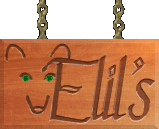|
|
 |
 |
 |
 |
|
 |
| World Editor FAQ: Terrain |
|
Q:
| How do I make interesting terrain?
|
|
A: |
Use the height modifier well. Completely flat terrain and incredibly jagged terrain
both look bad. To quickly "unflatten" your map use "noise" followed by "smooth".
Avoid both large open areas and narrow paths. The first is boring and the second is
frustrating.
Make your map no bigger than you need it to be. You can always increase the size
later if you find you need it.
Put doodads and weather effects in places where they belong. Mushrooms grow under
trees, cattails and rushes grow near water, fog forms in valleys, corn is planted in
rows and so on.
Conceal things that don't look pretty with doodads. Blizzard maps are very good
examples of this. Put rocks at the tops and bottoms of waterfalls to hide the fact
that the waterfall is not actually attached to the rest of the water. Put a layer of
doodads between deep water and shallow. Put bushes at the corners of ramps.
Don't try to do your terrain all at once. Your terrain can evolve along with the
rest of your map.
|
Q:
| How can I change the tileset?
|
|
A: |
Go to "Tools->Advanced->Modify Tileset". You can choose a tileset from there.If
you want to use parts of more than one tileset, then check the "use custom tileset" box.
You are only allowed a certain amount of texture space. The number on each type of
terrain indicates how much texture space it takes up. You will have to give up some
pieces in order to get others.
You cannot mix "cliff tiles". These have a red square
in them, as opposed to the blue. You should base your tileset on the one with cliff
tiles that you want. |
Q:
| How can I get walls to line up neatly, or bridges to stay smooth with the
terrain?
|
|
A: |
Select the doodad, press and hold the CTRL key, and use the page up and page down keys
to move the elevation up and down, and the numpad arrows to move it sideways. |
Q:
| How do I make my doodads all the same size (or all different sizes)?
|
|
A: |
Go to "Layer->Doodad". Now look at the palette. Near the top of the palette is a green
icon that turns random scaling on or off. |
Q:
| How do I make natural-looking height fields?
|
|
A: |
Set the brush size on 3, the shape on circular, and on "Apply height: Raise"
Move the brush back and forth over parts of the terrain that you want to be higher
(trees and cliffs are good candidates).
Set the brush size to 8 and on "Apply height: Smooth"
Click many times all around the area that you are editing (no need to drag), until
the terrain looks smooth.
Hold down "ctrl" and the right mouse button. Now move your mouse around to admire
your new terrain from different angles.
|
Q:
| How do I make waterfalls?
|
|
A: |
Create a cliff that is two levels tall.
Create shallow water on both sides of the cliff.
Go to "Tools->Advanced->Enforce Water Height Limits" and make sure that option is
unchecked.
Now add shallow water to the cliff itself. This will make it look funny.
Create a waterfall doodad.
Select the doodad and hold down "ctrl", then rotate the doodad to the correct angle.
Move the waterfall over your water-covered cliff.
Go to "Module->Sound Editor"
In the list of folders on the left, go to "Internal
Sounds->Sound->Ambient->DoodadEffects->WaterWaterFallLoop1.wav"
Right click on the file and choose "Use Internal Sound"
Now go back to the terrain editor and create a small region around your waterfall.
Select the region, then double click on it.
Check "Ambient Sound"
Under the drop down menu choose "WaterWaterFallLoop1"
|
Q:
| How do I modify the textures for cliffs, water, or the ground under a building?
|
|
A: |
These textures are unique because they are tileset secific. They always have the same
path name (cliffs are "ReplaceableTextures\Cliff\Cliff0" or Cliff1), yet they are
different depending on which tileset you use.
All of the tileset specific textures are stored in special sub-MPQ files within War3.mpq
or War3X.mpq. They are named "A.mpq", "B.mpq", "C.mpq" and so on. Inside of each mini
mpq file will be a different version of "ReplaceableTextures\Cliff\Cliff0". Warcraft
decides which of these sub-MPQ files to look in based on the tileset of your map.
You only need to know this if you are extracting the textures from the main MPQ files.
If you want to override the texture, just put it in your map file under the path you
want. Warcraft will look for the texture in your map file before it looks in the special
sub-MPQ files.
|
|
|
|
 |
 |
|
 |
 |
|
